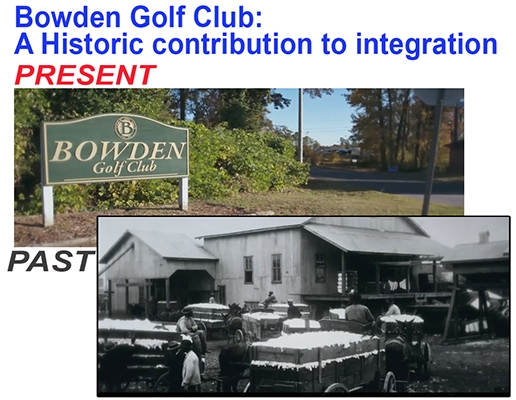Charlie Rymer reports on The Golf Channel the history of Charles L. Bowden Golf Club. The club is located just 4 miles northeast of Macon, Georgia and accommodates golfers of all persuasions. But this was not always the case. In 1846, the land was used to gin cotton. Then, in 1926 the City of Macon leased the land to build an airfield, and, it even served the famous female aviator Amelia Earhart. By 1935 the airfield did not meet the rigorous standards required of an airport and it was shuttered. The public golf course, Lakeside Course in Macon, closed in the mid-1930s, so there was a need for a new golf course. On June 10, 1938, the City approved a project and the Bowden Golf Club came into existence.
The 18-hole public golf course was designed in 1938 by John “Dick” C. Cotton (1907-1994), a Macon professional golfer and businessman. The course is named for The mayor of Macon, Charles Bowden, who agreed to assist in any way, except financially because the city had no money during the Great Depression to build golf courses. With the assistance of the Works Progress Administration (WPA) in Georgia, created in 1935 by President Franklin D. Roosevelt’s New Deal legislation, the WPA put the unemployed to work building public facilities. The course was completed and opened in September 1940.
 RELATED ARTICLE: Bowden Senior Men’s Golf Association Continues to Inspire Generations
RELATED ARTICLE: Bowden Senior Men’s Golf Association Continues to Inspire Generations
Sept. 29, 1940, white men and women began playing the course, however, African Americans could caddy there, but they were not allowed to play. In 1954, 48 African American petitioned the City of Macon to be able to play the course, but no action was taken. The first court-ordered desegregation in the state of Georgia took place on a golf course and in 1955 the U.S. Supreme Court decided in Holmes v. Atlanta which opened public golf courses to all people, regardless of color. 1961 a City Attorney in Macon, GA., discovered there was no written restriction to keep African Americans from playing, and integrated status was officially earned on June 6, 1961, close to a year before the Macon city busses integrated. The golf course was listed in the National Register of Historic Places on February 23, 2015.




